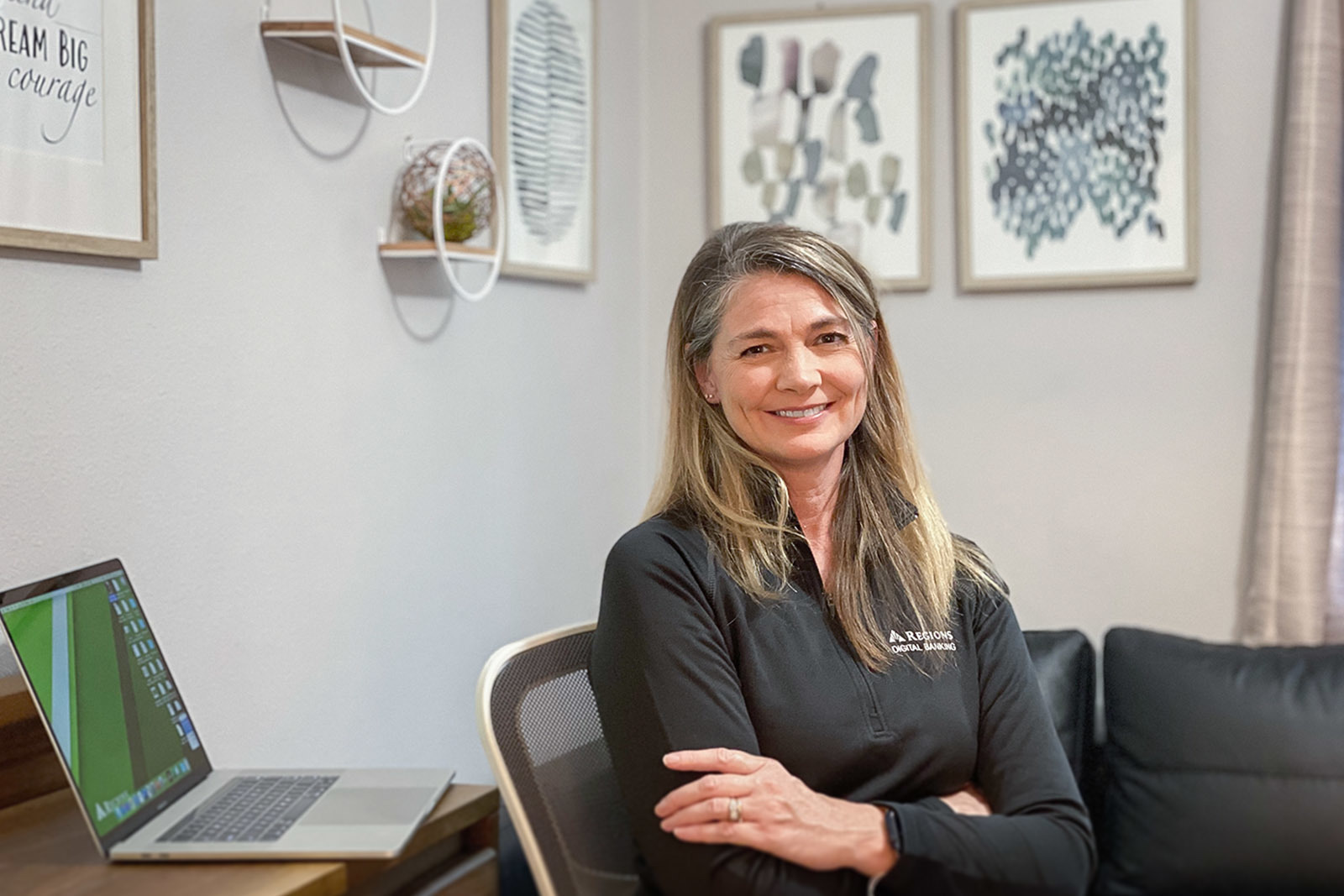Regions’ UX team focuses on one thing: Making digital banking easier.
UX stands for user experience, and the UX Research and Accessibility team is a discipline within UX comprised of professionals working together from Florida to Michigan.
“We have a group of specialists in UX that focus on customer feedback, perception and needs to deeply understand the customer,” explained Krissy Scoufis, the Usability, Accessibility and User Research team manager. “That includes understanding the needs of customers with disabilities. I have some team members who focus specifically on ADA (Americans with Disabilities), for people with all impairments, including cognitive or visual impairments. We make sure our digital platforms are accessible to everyone.”
The UX team just got stronger with the addition of Vincent Martin, a 30-year veteran of digital banking who joined Regions last month as an accessibility analyst. In addition to his work in the field, Martin has been an adjunct professor at multiple universities, including Georgia Tech, and was recently named to a second term by Gov. Brian Kemp on the Georgia Vocational Rehabilitation Services board.
Martin credits his team lead, Matt Browning, with helping Regions take a leading role in accessibility.
“Matt started in this role seven years ago, before there was a focus on accessibility,” Martin said. “But it made sense to him, and he created a team that has put Regions at the forefront.”
Martin has a national reputation, but his best experience is personal.
“Technically, I was born normal – but that’s a misnomer. No one is born with normal vision. A child doesn’t see clearly until age 5,” Martin said.
A natural athlete, Martin had mostly normal vision until retinitis pigmentosa first manifested at age 12 or 13. Initially, the loss of vision was gradual. As a teen, he still had 20-20 vision and was a four-letter athlete, yet he began struggling with color discrimination and night blindness. And the symptoms only increased. At night, hanging out with friends in town, he found himself walking into walls or light poles.
At age 23, doctors delivered the diagnosis, and for the next eight years he managed to adjust to ever-changing circumstances, until everything suddenly went dark for good.
“It was a big deal. I used to teach in rehab facilities, and I’d be around people who lost their sight to trauma. But I literally went from functioning to losing vision within six months.”
He also went from being an engineer, recruited by a major company, to unemployed because his new employer didn’t have accommodations.
Out of a job, seemingly out of options, Martin came to a different conclusion.
“I still tell people that blindness is the best thing to ever happen to me because it was an eye-opening experience,” he said. “My other senses were heightened, and I learned to really appreciate the transition period.”
He returned to school, finishing a series of degrees – from economics to human computer interaction to psychology – to a Ph.D. from Georgia Tech. And, in his spare time, Martin focused on making the 1996 U.S. Paralympic team. Competing in his hometown of Atlanta, he represented his nation in the pentathlon, the 100-meter dash and discus.
How do you compete at a world-class level after losing your vision?
Visual memory, Martin said, which he applies to his work, as well.
After working as a contractor for Regions the past two years, he’s now a full-time member of the UX team.
“Our approach with the UX team is to design for as many people as possible because the general population has limits, even though they don’t always know it,” Martin said.
Take, for example, someone needing reading glasses. The UX team works to make sure the transition from doing digital banking is seamless from a desktop computer to a cell phone.
“We have a mature and advanced accessibility team,” Scoufis said. “It’s ahead of the class, compared to peer banks. The fact that we have an in-house team makes us an exception. That means we can be more responsive by providing custom feedback and consistency.
“And because we sit in Digital Banking, we’re a part of product and business strategy, which ultimately puts us closer to our users, our customers.”
 Krissy Scoufis credits Regions management for the commitment to keep the UX team ahead of the curve.
Krissy Scoufis credits Regions management for the commitment to keep the UX team ahead of the curve.
Like Martin, Scoufis credits Browning and Chief Digital Officer Andy Hernandez for Regions’ cutting-edge approach.
“Matt Browning has a passion for accessibility and advocated for this concept of designing for all. But none of that happens without the full support of senior management. Our UX team manager, Todd Keith, knows how usability and accessibility goes hand-in-hand. Andy Hernandez supports that and our mission of providing digital tools for all,” Scoufis said. “And Kathy Lovell, our point person for accessibility, approaches it from the branch side while UX explores our digital options.”
Now, with the addition of Martin, the UX team is stronger than ever.
And customers will reap the benefits.
Martin recently visited the Regions Operations Center, with his seeing-eye dog Karsen, to test a screen reader in front of the Regions development team, which allowed them to understand, in person, how their coding impacts others.
“A digital product can’t be accessible if it’s not usable,” Scoufis said. “So, it first must be usable. Then, when we add on accessibility, we have true success.”